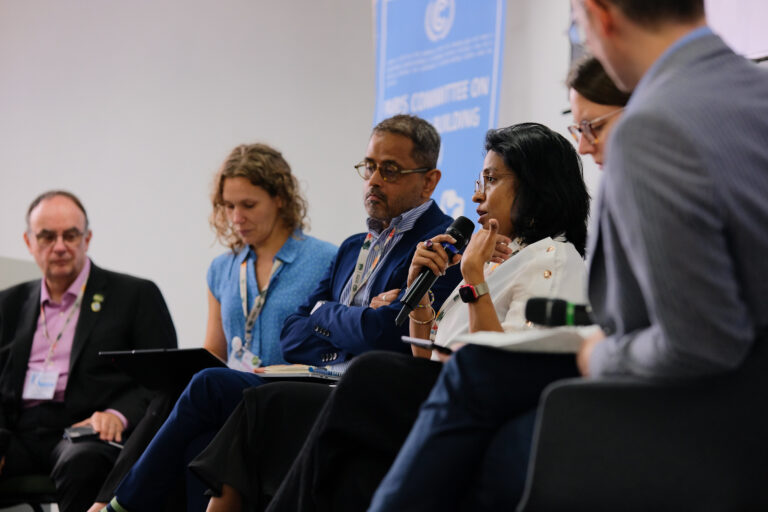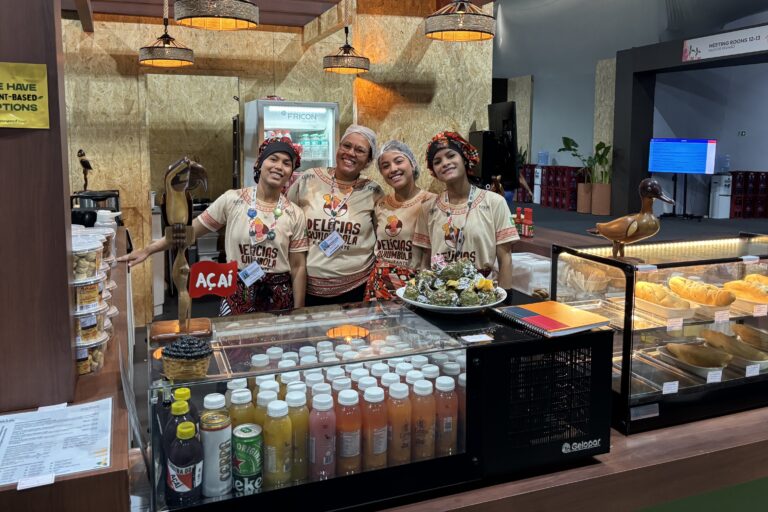- Yak milk products are exclusive to the Brokpa pastoralist herders, a yak-rearing community of the Himalayan regions of India.
- Nomadic yak herding relies on ecosystem awareness and inherited traditional knowledge but with changing times, its subsistence economy is causing its gradual decline.
- Brokpas are being educated on the semi-sedentary model, and a viable bankable scheme has been introduced for profitable yak farming keeping the younger generation in mind.
The marketplaces in Arunachal Pradesh are brimming with an array of local delights, including seasonal kiwis, persimmons, nuts, etc. What’s most captivating to the waves of tourists flocking into the state as winter unfolds are the garlands of light brown and white candies hanging in every store. Inquisitive buyers with adventurous palates desire to savour a piece and are often seen enquiring with the shopkeepers.
Despite the resemblance, they are not candies, but hardened cheese, known locally as chhurpi, crafted from milk. The white variant is special for it is made from yak milk.

On brisk winter days, visitors delight in sipping a steaming cup of Tibetan buttermilk tea, a quintessential beverage in the Himalayan region. But those in the know prefer this delectable concoction to be prepared not with the regular market-bought butter, but with a generous dollop of yak ghee.
These yak milk products are an exclusive creation of the Brokpa (Brok means pastures and Pa refers to man) pastoralist herders, a yak-rearing community of the Himalayan regions of India. In Arunachal Pradesh, the Brokpas are a sub-tribe of the larger Monpa tribe, residing in the West Kameng and Tawang districts in the eastern Himalayan region.
As climate change and shifting socio-cultural dynamics threaten the livelihoods of pastoralists, the need for an additional income in their otherwise sustainable yet economically-challenging lifestyle becomes more pressing. The rising demand for yak milk derivatives serves as a potential solution.
With changing times, Brokpas have increasing need for currency
The Brokpas are transhumance pastoral nomads, practising seasonal migration to high-altitude grazing grounds. They easily adapt to climate variability and grazing pressure from seasonal dips in pasture availability. Accessing food resources at the right time is crucial for yaks (Peophagus grunniens).
Currently, India has a yak population of around 58,000, with approximately 24,700 located in Arunachal Pradesh. Out of the roughly 2,500 Brokpas nationwide, about 1,200 reside in the state.

Brokpa Ringchin Kesang from Lubrang, a pastoral village situated at an altitude of 10,000 feet, said, “My family owns a herd of 80 pure-breed yaks. Yaks are susceptible to high temperatures, and after surviving on limited feed in the winter, they starve for nutrition. So, in April-May when the temperature begins to rise, my wife, sister and I start the ascent with our herd, accompanied by other herders of the region.”
Kesang added that herders from Lubrang, Mandala-phudung, and other areas first reach Sela Pass via Vijay Gompa in Bhutan. “It is a three-day journey. We halt there for a day or two to stock up on essentials and for other Brokpas to gather with their herds. From there, we ascend as a group to Luguthang in Tawang, which is at 14,500 feet. It takes us about 10 days to reach. The snow doesn’t melt in the high mountains and we have to cut paths through it for the herds. There are transit shelters on the route to spend the nights.” Other herders follow similar migratory routes to Rampu, Lungthang, Dongchepu and Churkhatang in West Kameng; and Thingbu, Broxer Tanglung, and Zithang in Tawang.

These forays into grazing grounds come at a cost, as different rin (fee) are levied for accessing them. Meadows and forests are owned by either individuals, clans, communities or even monasteries and the fees are paid to them. The rin is calculated depending on the number of animals, season and nature of the grassland (new or already grazed), size of the pasture and duration.
While in transit, the herders are required to pay the Lamrin, which permits them to stay for approximately three nights along the transit route. Purin is charged for grazing in forest areas. Traditionally, butter, cheese and livestock were used as currency until the money economy became significant in herders’ lives. Kesang shared that he had to pay over Rs. 10,000 in the last winter (for the entire season of six months) just as taxes in addition to ghee and chhurpi. Milk products are also included as tax.
The herders sell the leftover yak milk products after their consumption. Yak milk products help them survive the harsh winters in the high mountains and provide essential nutrition throughout their migration period when alternative sources are scarce. “We carry rations for four-five months,” Kesang said. The vegetables and perishables are consumed first. Being Buddhists, they do not kill animals and eat the meat only of the dead animal. “The milk is churned to chhurpi, churkam, ghee, curd, etc. Whatever remains after our consumption is sold to the local markets. We come down to the village once and sometimes even twice during the migration period to restock on our essentials, and sell our products,” he shared.

With changing times, the younger Brokpas are opting for formal education and are less inclined to pursue the semi-nomadic lifestyle of their ancestors primarily due to the hard work involved and the economic and social uncertainties associated with the traditional way of life. Like his fellow Brokpas, Kesang’s family has also bought a plot of land at a lower-elevation town area and built a second house. His three children stay there and attend school.
Earnings from yak milk products sustain the community
Traditionally, value-addition to yak milk is done using indigenous technology. The skimmed yak milk (called dhara) is fermented using curd inoculums. The soft wet cheese left after churning out the butter is the chhurpi which is for immediate consumption. The dried chhurpi, called churtang with a longer shelf life, is stored in yak skin bags. The butter is clarified to make ghee and preserved similarly. Yak skin bags render a pungent smell to the cheese and ghee stored inside which needs to be removed before they are sold in the market.

Of all the yak milk products available in the market, chhurpi and ghee are the most popular and the demand consistently outstrips supply. Moreover, product availability is largely limited to the markets of West Kameng and Tawang districts, with marginal supply outside.
Brokpas sell chhurpi at Rs. 600-650 per kilogram and ghee at Rs. 400 per kilogram. In retail, shopkeepers often add a profit margin of Rs. 50 to chhurpi sales; bite size pieces are sold at Rs. 10 a piece. Ghee is retailed at Rs. 600 per kilogram.
Value addition to yak milk for better sales
The traditional production method is labour-intensive. The Yak Centre (National Research Centre [NRC]-Yak) has come up with various interventions to support the community to tap into the demand for the milk and its derivatives.
“Processing and packaging yak milk products at high elevations where the milk is produced is not always hygienic and outsiders are often reluctant to consume it. To expand the market, we are addressing these issues, providing hands-on training to the Brokpas in hygiene and quality control measures,” Vijay Paul, principal scientist at the NRC-Yak said. To make yak farming more remunerative by popularising yak milk derivatives, the institute has opened a high-altitude yak milk dairy and parlour at Nyukmadung. The Arunachali Yak chhurpi has also recently acquired a Geographical Indication (GI) tag.
The milk yield of the medium-sized Arunachali yak is relatively low with short lactation periods compared to hill cattle and yak-cattle hybrids (Dzomo). On average, a female yak produces 0.98–1.04 kilogram of milk per day, totalling about 185 kilogram of milk in a 180-day lactation period. Despite the modest yield, yak milk is more nutritious than that of other bovines.

An assessment of the nutrient composition and physicochemical properties of Arunachali yak milk, reared under farm conditions, by the Indian Council of Agricultural Research-NRC-Yak in Dirang, revealed it is nutritionally superior to other bovine milk. Dr. Vijay Paul, principal scientist at the NRC-Yak said, “In general, yak milk is considered a naturally concentrated milk enriched with a higher nutrient density and loaded with omega-3, fatty acids, amino acids, and antioxidants; it also has vitamins and minerals.” Thick and sweet yak milk is richer in protein, fat, lactose, minerals, and total solids than cow’s milk.
In addition to the traditional products, the NRC-Yak has introduced innovative value-added items, such as dietary fibre-enhanced low-fat paneer, vegetable-extended paneer, kiwi-flavoured and Vitamin C enriched whey beverages and even mozzarella and cheddar-style cheese.
Semi-sedentary yak rearing as the way forward
The yak milk production is contingent on the availability of feed. There is fodder shortage in winters when the yaks lose 25-30% of their body weight. To ensure nutritional security of the bovines at all times, the NRC-Yak has developed Complete Feed Blocks (CFB) using locally available crop residue, and suitable biomass such as green maize fodder, napier, salix, etc. and distributed to the herders. Besides, herders are trained on fodder conservation techniques and cultivation of efficient varieties of maize.

Additionally, the NRC-Yak has developed a semi-sedentary model of yak rearing in its Nyukmadung farm, located at an altitude of 9,000 feet. In this model, yak herds are permanently kept at a particular elevation and the rearing needs including breeding, feed development, etc. are scientifically managed to minimise the need to migrate.
It presently has 125 yaks and 17 dzomos. A low-cost silage-making technology has also been developed and is in use at the farm. “We have been working on this successful model for the past 25 years, whereby we can sustain milk production even in the winter months,” Paul said.
The Brokpas are being educated on the semi-sedentary model and a viable bankable scheme has been introduced for profitable yak farming. “This is particularly directed at the younger generation who are reluctant to take up herding. We are also advocating the introduction of tourism to such farms for added economic benefit,” he shared.
Nomadic yak herding relies on ecosystem awareness and inherited traditional knowledge and is crucial for the preservation of both. Yet, with changing times, its subsistence economy is causing its gradual decline. As such, value-addition to yak milk presents a distinctive opportunity for the economic rejuvenation of yak pastoralism.
Banner image: A yak grazes in the high-altitude mountains in Arunachal Pradesh. Yak milk products like chhurpi are becoming a viable livelihood option for Brokpa pastoralist community who rears yaks. Photo by Surajit Sharma/Mongabay.














